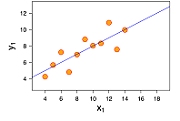Maui SEO
 When your potential customers search for your business in their area, can they find you? Is your biggest competitor getting all the business while you’re scratching your head and trying to figure out how to turn the tides? Business isn’t about leaving things to chance. It’s about grabbing the bull by the horns and making things happen. You can control how well your business does in the local market. All you have to do is invest in a Maui SEO company that has the resources and know-how to put your business listing or website on the top.
When your potential customers search for your business in their area, can they find you? Is your biggest competitor getting all the business while you’re scratching your head and trying to figure out how to turn the tides? Business isn’t about leaving things to chance. It’s about grabbing the bull by the horns and making things happen. You can control how well your business does in the local market. All you have to do is invest in a Maui SEO company that has the resources and know-how to put your business listing or website on the top.
Maui Search Engine Optimization
 When it comes right down to it, Maui search engine optimization is the little man’s equivalent to a sixty second television commercial – except that Maui search engine optimization can generate more sales than a television commercial that reaches the same number of people. Why is that? It’s quite simple, actually: Maui SEO offers a higher return on investment by targeting only people that are already interested in your product or service.
When it comes right down to it, Maui search engine optimization is the little man’s equivalent to a sixty second television commercial – except that Maui search engine optimization can generate more sales than a television commercial that reaches the same number of people. Why is that? It’s quite simple, actually: Maui SEO offers a higher return on investment by targeting only people that are already interested in your product or service.
Maui Website Design
 Generating a steady stream of qualified leads through the internet takes a lot more than Maui SEO, though. SEO gets the right people to your web presence. If your website isn’t optimized for converting potential customers, though, your visitors will simply hit the back button and try the next website. Our highly experienced Maui website design specialists focus on creating an aesthetically pleasing, easy-to-navigate website that encourages visitors to complete a transaction by integrating elements that put your website visitors in a buying mood. What it all comes down to is this: our Maui SEO can drive traffic to your website and our Maui website design can make those website visitors convert into paying customers. We can turn your website into a lead generating machine and give you the success you’ve always strived for.
Generating a steady stream of qualified leads through the internet takes a lot more than Maui SEO, though. SEO gets the right people to your web presence. If your website isn’t optimized for converting potential customers, though, your visitors will simply hit the back button and try the next website. Our highly experienced Maui website design specialists focus on creating an aesthetically pleasing, easy-to-navigate website that encourages visitors to complete a transaction by integrating elements that put your website visitors in a buying mood. What it all comes down to is this: our Maui SEO can drive traffic to your website and our Maui website design can make those website visitors convert into paying customers. We can turn your website into a lead generating machine and give you the success you’ve always strived for.
Some Interesting Maui Tidbits
The first people to visit Maui were the Polynesians, from the Marquesas and Tahiti. The Tahitians introduced a strict social order that became the centerpiece of culture in Hawaii and affected all aspects of life known as the kapu system. In the middle 1700’s the history of the current Hawaii started. In 1790, the king of the Big Island of Hawaii, King Kamehameha I invaded Maui but the Battle of Kepaniwai was inconclusive. Some years later, he returned to Hawaii to battle a rival and finally subdued Maui. .
The first European visitor to see Maui was explorer Captain Cook in 1778. However, he couldn’t find a suitable landing site and never really landed on the island. The first European to actually land on Maui was the French admiral Jean Perouse in 1786. He arrived on the shoreline of what is currently called La Perouse Bay. Additional Europeans came next including missionaries, sandalwood loggers, whalers, and traders. In 1823, the missionaries from New England started arriving and eventually settled in Lahaina, which was the capital at the time. They altered the culture greatly by banning the hula dance and dressing the natives. These missionaries started writing the history of the island which was transmitted orally up until then, began a printing press in Lahaina, created a 12 letter Hawaiian alphabet, and taught reading and writing. It is somewhat ironic that these missionaries both preserved and altered the culture of the natives. Their literacy work preserved the language and history of the natives and their religious efforts altered their culture. In 1831, the first school in Lahaina currently known as the Lahainaluna Mission School was opened by the missionaries.
Between the years 1843 and 1860 the whaling era was at its height. Lahaina had anchorage in Lahaina Roads and was a primary center for whaling. More than 400 ships arrived in Lahaina in one season and 100 berthed at any given time. Rather than staying ion port for days, ships usually stayed in port for weeks. Although the missionaries battled in vain, this explains the prostitution and drinking that, at the time, went on in the community. At the end of the 1800’s, the whaling industry was reduced considerably because whale oil was being replaced by petroleum.
Up until 1872, the descendants of King Kamehameha reigned. Rulers for other ancient families of chiefs followed such as Queen Liliuokalani who ruled until her monarchy was overthrown in 1893. The Republic of Hawaii was established in 1894. In 1898m the US annex the island and in 1900, the island was made a territory. In 1959, Hawaii became the 50th US state.
In the Hawaiian Islands, the Luviminda Vibora trades union held the last labor grounds that was based on ethnic discrimination against four sugarcane plantations in Maui in 1937. The union demanded the dismissal of five foremen in addition to higher wages. Nine leaders of the strike, including Manuel Fagel were arrested for kidnapping a fellow worker. While the strike was continuing, Mr. Fagel spent four months in jail. Eventually, the point was made by Luviminda Vibora and after being on strike for 85 days, the workers won a 15% wage increase although here wasn’t any written contract signed.
During WW II, Maui was centrally involved in the Pacific Theater for rest and relaxation, as a training base, and as a staging center. During the years between 1943 and 1944, at the peak of the war, over 100,000 soldiers were stationed in Maui. The Haiku Beaches were the primary base for the 4th Marine Division and were used to train in marine sabotage and demolition and practice landings.
